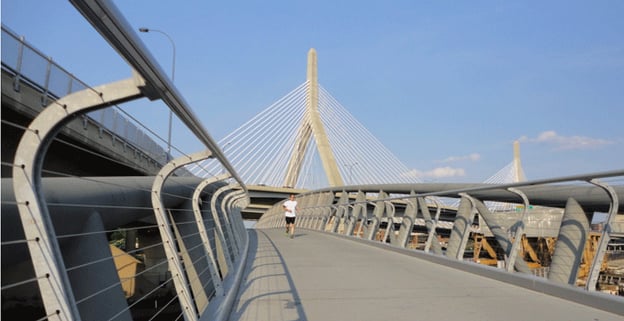
When fiber-reinforced polymer composites hit the scene more than two decades ago, it was a little bit like Superman’s first appearance in Metropolis. Despite FRP’s “super powers” and the advantages that came with them, the industry’s reaction was cautious and a bit skeptical. Early on, FRP found itself pitted against conventional materials spanning a range of markets. Since then, experience and hard data has proved that FRP has found its sweet spot, whether it's found in underground pipe, aircraft or a bridge. And in some cases, this super hero material saves the day while assisting conventional materials. To get a better idea of how FRP stacks up to metals and even wood, let’s look at a couple of examples. After all, we know that FRP is making good in-roads within the bridge industry due to its lighter weight, corrosion resistance, quick installation and zero maintenance. But what about markets like building construction and automotive?
For building projects that require corrosion resistance (think chemical processing and mining facilities), FRP is the smart choice over A 709 Grade 50 steel, 6061 aluminum and douglas fir [wood]. Why so smart?
1. FRP exhibits greater flexural strength than timber and is often stronger than steel and aluminum when used in its primary direction.
2. FRP weighs 75 percent less that steel and is 30 percent lighter than aluminum.
3. FRP is up to 3.3 times as rigid as timber and is not subject to permanent deformation under working load. It has a modulus of elasticity rated at 3 X 10⁶ psi. Steel has a rating of 29 X 10⁶ psi, aluminum 10 X 10⁶ and wood 1.6 X 10 ⁶ psi.
4. FRP materials are considered non-hazardous, assuaging environmental concerns.
5. In the area of impact resistance, FRP does hold the upper hand over steel, aluminum and wood since it is the only choice among these materials that will not permanently deform under impact.
As we mentioned earlier, material selection is really driven by application and the mechanical properties your project requires.
FRP can also be tailored to meet certain requirements. Designers and engineers have the flexibility to modify physical and chemical attributes by specifying different materials. These range from high glass fiber reinforcement for maximum strength to high resin content for resistance to chemicals. This means that the ability to combine unique ingredients can provide composites that are able to deliver superior performance over metal.
Car manufacturers striving to meet the National Highway Traffic Safety Administration’s Corporate Average Fuel Economy (CAFE) standards (dictating cars and light trucks must deliver fuel economy of 50 mpg by 2025) are also looking at giving a FRP a greater role. While high-strength steels continue to be developed and used, it's FRP that holds the most potential to reduce vehicle weight, improve fuel economy and enhance safety and performance.
The U.S. Department of Energy Office of Energy Efficiency & Renewable Energy stated that lower cost, FRPs could reduce passenger vehicle weight by 50 percent and improve fuel efficiency by about 35 percent - all without compromising performance or safety. They estimate this would save Americans more than $5,000 in fuel costs over a car’s lifetime.



